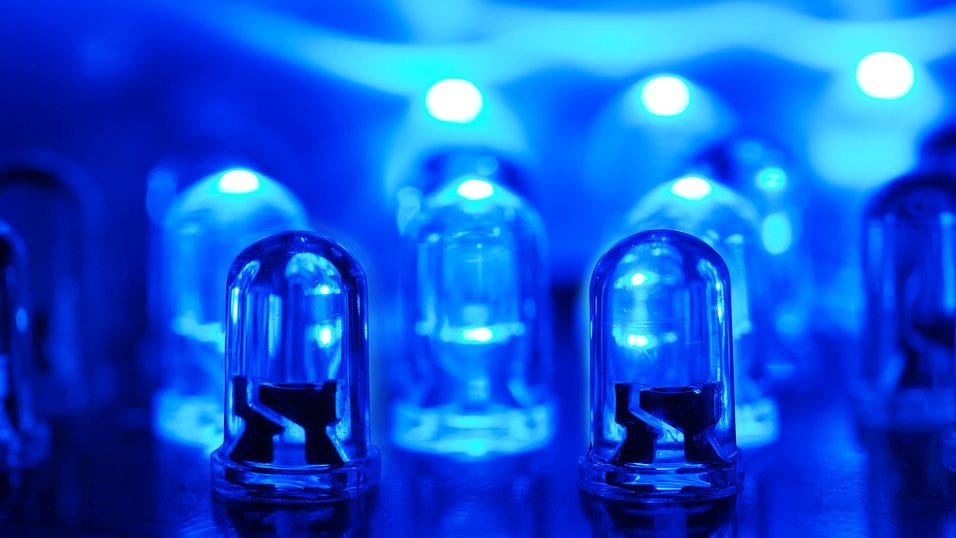Giving Thanks to Mister Nakamura
Giving Thanks to Mister Nakamura
…and the light he spreads across the world.

It’s 07:02 in the morning and the snow is cold and sparkling. It squeaks beneath my feet.
With two hundred meters left to the bus stop I feel the cold crawl right into the marrow of my bones.
Together with eight other daring bus passengers, I try to keep warm by small means. Not standing still, not moving too much.
Four minutes later I see, peeking from under my hood, the snowy wheels of the bus rolling up. Shivering, the company walks in a proper Swedish line on to the bus.
One seat is vacant. It’s next to a middle-aged woman who has gotten on a few stops earlier and already thawed. She reads a thick pocketbook in the pleasant light. Shantaram, I note.
Almost the entire bus is veiled in darkness. Only the reading lights, blue and white in mild unison, are lit. With the light a pleasant feeling envelops me as my marrow slowly warms. I wonder how many people know it is thanks to Shuji Nakamura?
Up until 1993, we had largely relied on an invention over a hundred years old: Thomas Alva Edison's incandescent light bulb, invented in 1879.
Then, in the early nineties Nakamuras hard work produced a worlds first, a working blue LED that was also suitable for mass production.
Blue made it possible to reach the Holy Grail, the white light diode, which Nakamura managed to achieve with a secret spelled gallium nitrate.
Today we have a world bathing in light, requiring one-tenth of the power of previous technologies and lasting a 100 times longer.
2017 LED bulbs contributed to a reduction of 570 million tons of carbon dioxide emissions.
Thanks Mister Nakamura, I say to myself as the light from the bus plays in the snowy road outside the window.
The least I can do is to write a post in honor of you.